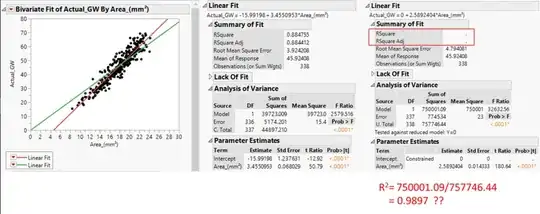I have some questions.
In a linear model, I want to force intercept to zero.
The program (I used JMP) does not provide R-squared when intercept becomes zero.
So, I calculated R-squared by myself by given SSR/SST in the program. The R-squared was higher than before forcing to zero.
Is this possible? Because linear fitting is based on minimizing error, so if I change it artificially, I think R-squared should be decreased. Also, the linear line (Green line) for intercept 0 on the graph, seems not to have 99% R-squared.
If this R-squared is not correct, how can I calculate R-squared when forcing intercept to zero?
Many thanks,
